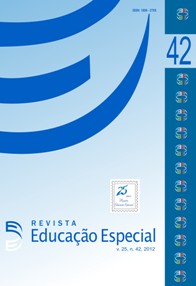“Learning-talks in science museums: how a visually impaired person interprets the educational material at the museum of microbiology”
DOI:
https://doi.org/10.5902/1984686X4341Keywords:
Visually impaired person, Science museum, Touching materials, Learning talks.Abstract
The processes of science communication and science education became especially important in the last quarter of the last century. Science museums, as non-formal spaces have an important role in amplifying and refining these processes. Being spaces open to the general public will be expected to develop programs that include all of its citizens. The Museum of Microbiology of the Butantan Institute has developed a series of activities and educational materials focusing on microorganisms that were designed to facilitate a closer integration of the visually impaired public with the scientific culture. In the present study, we sought to understand how visually deficient visitors interpreted the materials presented, determine the level of understanding that the use of these materials provided and study the significance attributed to them. Visually impaired visitors were interviewed during their interactions with the materials with the aid of an audio guide, and the talks generated were analyzed within interpretative categories. The most frequent category was “Strategic talk (Use)” (11.8%), in which the visually deficient visitors gave their opinions concerning the uses of the Micro-Touch Program. Two other categories, “Affective talk (Pleasure)” (10.2%) and “Perceptual talk (Identification)” (8.6%) were also established. A combination of tactile and auditory tools was fundamental to solve problems and to the creation of visual representations that are important to constructing and understanding scientific concepts and to facilitate the organization of theoretical thought. We suggest here the necessity of elaborating activities contents that favors the establishment of conceptual talks and considering the previously acquired knowledge of visually impaired visitors during the design of displays, providing higher frequency of other learning talksDownloads
Downloads
Published
How to Cite
Issue
Section
License
Declaration of originality
We declare that all articles present in the journal Revista Educação Especial (UFSM) are originals and were not submitted for publishing on any other publication, as a whole or a fraction. We also declare that, after being published by Revista Educação Especial (UFSM), a paper will not be submitted to another journal within two years. After this time, our journal transfers the publishing rights to the authors, with a permit granted by the Editorial Council.
We also acknowledge that the originals’ submission to Revista Educação Especial (UFSM) implies on a transference of copyright for physical and digital publishing to the journal. In case of noncompliance, the violator will receive sanctions and penalties predicted by the Brazilian Copyright Protection Law (n. 9610, dated 19/02/98).







